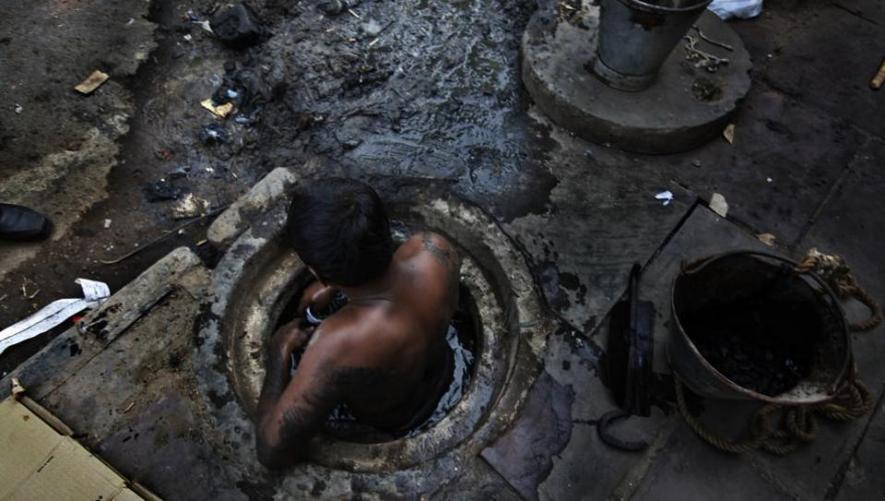Manual Scavengers: Only 2% Got Cash Assistance Under Rehab Scheme

Representational Image. Image Courtesy: Hindustan Times
Under the schemes run to rehabilitate the manual scavengers in India, only 6% of the total identified manual scavengers have been imparted skill development training in the last two years. Similarly, one time cash assistance has been provided to only 2% of them.
The figures have been published by a parliamentary standing committee on social justice and empowerment, which tabled its report in both houses of Parliament on December 12.
Of the 42,303 manual scavengers identified in 2018 during the National Survey of Manual Scavengers, the committee observes, skill training has been imparted to only 1,682 of them in 2018-19 and 978 in the current year. Revealing another failure of the Centre in eliminating manual scavenging, the report stated that one time cash assistance was provided to only 298 in 2018-19 and 428 in 2019-20.
Also read: New Plan for Manual Scavengers Misses Crucial Questions, Just an Eyewash: Bejwada Wilson
The budget documents, explanatory notes etc. were obtained from the Department of Social Justice and Empowerment by the committee on November 5. The number of manual scavengers who were provided the skill development training in the previous years is no better either. In 2016-17, the beneficiaries were 4,373 while in 2017-18, the number of beneficiaries were as low as 334.
The number of beneficiaries remained low despite incurring an expenditure of Rs. 3.18 crore in 2016-17, Rs. 3.48 crore in 2017-18 and Rs. 79.81 lakhs in the year 2018-19, as informed by the department to the committee.
Headed by BJP’s Lok Sabha member Rama Devi, the standing committee advised the ministry to take the implementation of the rehabilitation schemes “very seriously.”
“The Committee are pained that manual scavenging is still prevalent in the urban areas in India,” said the report, adding that it is of the view, “that if manual scavenging is to be eliminated then the Department has to take implementation of this Scheme very seriously.”
The report paints an abysmal reality of the rehabilitation programme carried out by the Centre, especially when even the number of ‘identified’ manual scavengers is grossly inadequate. Several studies show how the data provided reflects a disproportionately low number of manual scavengers, in comparison to the number of insanitary latrines in the country.
Moreover, several questions have been raised in the past regarding the method of identifying manual scavengers in the country, where the official data contradicts itself.
The Socio-Economic Caste Census of 2011 counted over 1.82 lakh families that had at least one member employed in manual scavenging. An inter ministerial task force in 2018 had counted up to 53,236 people involved in manual scavenging. Even that figure amounted as a underestimation as it included data from only 121 of the 600+ districts in the country, as reported by Indian Express.
Also read: Latest Govt Survey Counts Over 50,000 Manual Scavengers Across 12 States
Manual scavenging, which involves manually cleaning human excreta from dry latrines and sewers, was banned 25 years ago with the passing of the Employment of Manual Scavengers and Construction of Dry Latrines (Prohibition) Act 1993. In 2013, another attempt was made through The Prohibition of Employment as Manual Scavengers and their Rehabilitation Act. Unlike the earlier Act, the 2013 law provides for the rehabilitation of the manual scavengers.
The rehabilitation of the manual scavengers is currently being implemented through a central scheme, namely, Self Employment Scheme for Rehabilitation of Manual Scavengers (SRMS). Under the scheme, one time cash assistance of Rs. 40,000 is provided and a skill development training up to two years with a stipend of Rs. 3,000 per month is provided among other benefits.
Get the latest reports & analysis with people's perspective on Protests, movements & deep analytical videos, discussions of the current affairs in your Telegram app. Subscribe to NewsClick's Telegram channel & get Real-Time updates on stories, as they get published on our website.
























